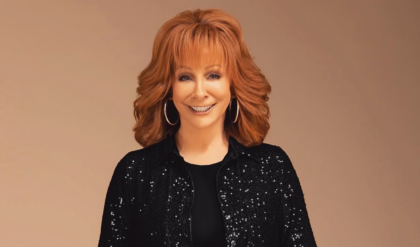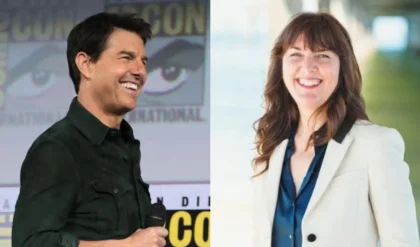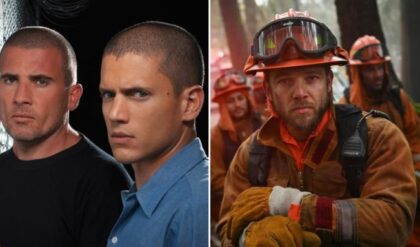This folk horror story is not your regular possession story.
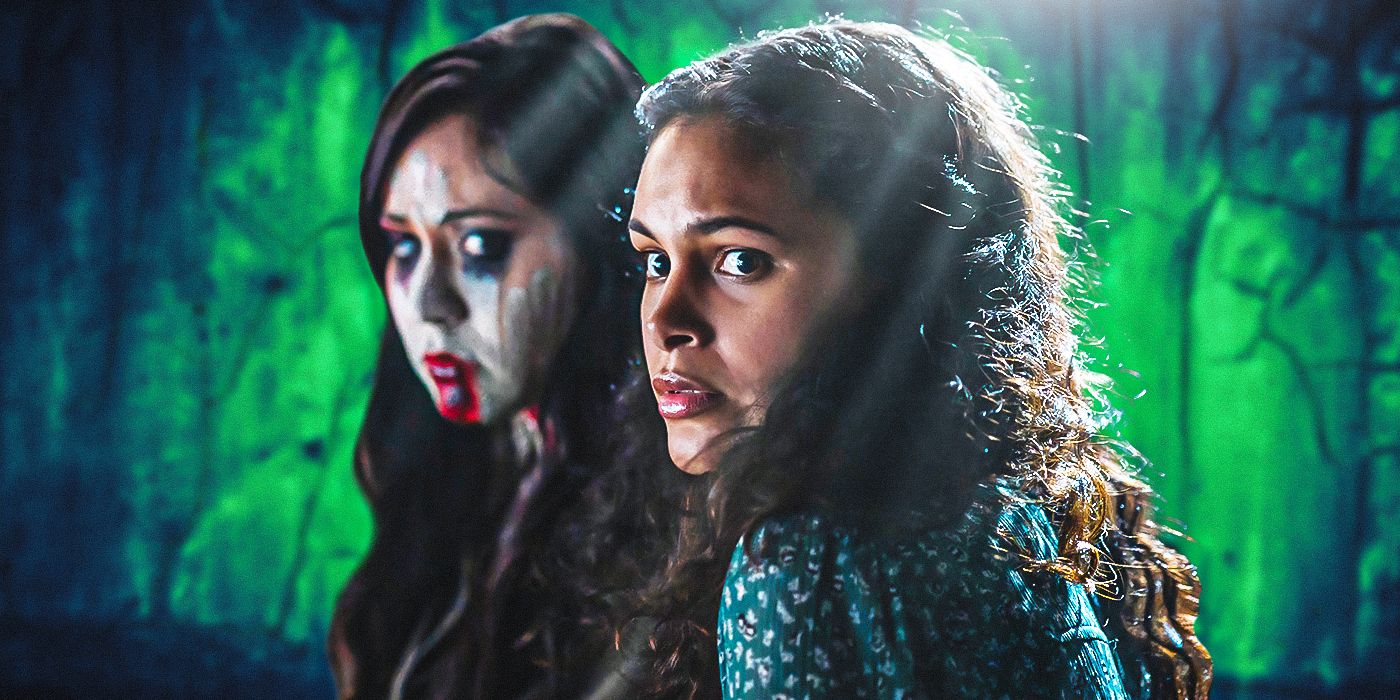
With the supernatural horror genre as saturated as it is, we’re hard-pressed to discover any new or fresh content that makes us genuinely contemplate what we just watched. The Old Ways may open up seeming like a regular possession movie with a folk backdrop, or even of the torture genre, considering how early it wanders into violent territory with a bound and blindfolded protagonist, but we are quickly met with a beautiful and provoking exploration into cultural erasure. Breathing new life into a recycled premise of a well-worn genre, The Old Ways prioritizes the representation of tradition and humanity over cheap jump scares and thrills — not to say that it isn’t downright terrifying. Featuring a rich and intriguing culture, a protagonist with an acute sense of displacement and a struggle with an identity crisis, and a haunting interaction between stunning visuals and significant soundtracks, the film envelops us into the ancient world while mourning its potential loss.
What Is ‘The Old Ways’ About?
Cristina reacts to this information as any “non-believer” would, initially believing it is a kidnapping and desperately pleading for her captors to consider a ransom. When she sees her cousin, she begs, reasons, and threatens for Miranda’s cooperation to no avail, leaving her alone and shackled in the dreary concrete cell with ritualistic and macabre markings on the wall. The film follows Cristina coming to terms with the beliefs of “the old ways,” and how it has impacted her past and present. This is accompanied by haunting rituals and visuals that incite stomach churning fear and disgust, from Luz digging into Cristina’s stomach and finding rotten teeth, to Cristina pulling out an armful of slimy and coarse hair from the back of her throat. While the finale’s CGI is slightly disappointing, the power of Cristina’s growth and revelations leaves us buckling in awe of the culture’s vitality and richness.
The Veracruz Culture Represented in ‘The Old Ways’ Has Many Influences
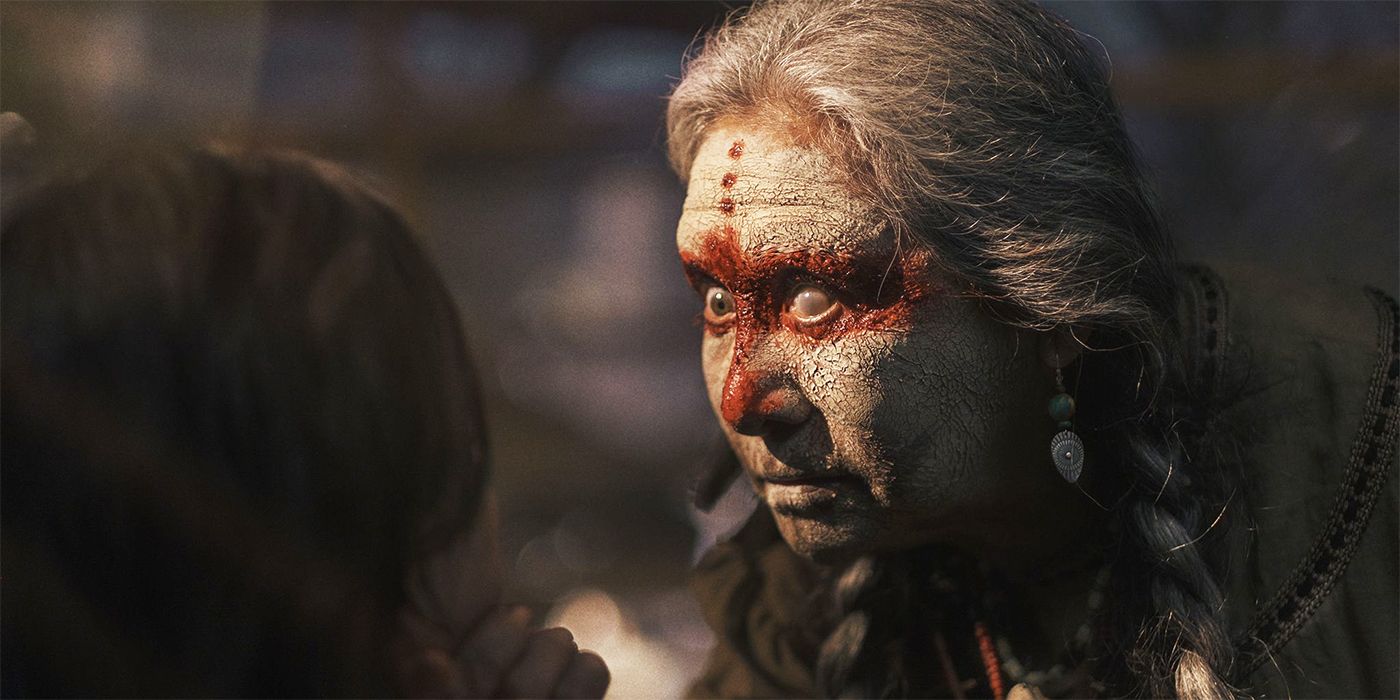
Inspired by screenwriter Marcos Gabriel’s own experiences with a bruja, director Christopher Alender and Gabriel capitalized on that “gem of an idea” and scoured the internet to find “surgeries and… cleansing techniques” that would fit into the film. Funnily enough, they do warn us: “Don’t go too far down that rabbit hole.” But this research narrowed down their setting choices to Veracruz, Mexico, a coastal city that saw the interaction of enough cultures for the filmmakers to pull inspiration from a few. Gabriel tells Fangirlish,
“So, as you know, since you’re from Puerto Rico, we have the Afro-Caribbean influences that kind of came in. And it’s kind of right along the Caribbean there, Veracruz. So, that draws in some of the influences. Catholicism and you also have the Aztec and Mayan influences of the region. And just that area, Catemaco, is kind of known as the witchcraft capital of Mexico.”
Though Catemaco is home to brujas who practice black magic, Luz is more of a shamanic healer who performs ritual cleansings or exorcisms. Nearly every religion has a similar figure who is rooted in ancient practices, like priests in Christianity or ojhas (roughly translated to witch doctors, though some do practice black magic) in Hinduism. Through meticulous research and the desire to honor the cultures in the area, the film includes realistic shamanic practices and a fictional ritual that seems to be inspired by Christian iconography: the “broken man” ritual. This involves a triangular stick frame being viciously nailed to the ground, which in turn affixes the inflicted onto the ground in a manner that looks like they are being crucified. Per Den of Geek, the image of the ritual that Cristina found in a book is reminiscent of the “Hanged Man” tarot card, one that often represents self-sacrifice, hinting at Luz’s sacrifice during the ritual.
The La Boca caves are also a fictional place, but these shots were filmed at the Camuy cave system in Puerto Rico, with their “big toothy and evil mouths” making for the perfect lair of the demon Postehki. Roughly translated to the “death god of broken things” in the ancient Aztec language, Nahuatl, Postehki is not a real Aztec deity though, as discussed on Den of Geek, it can be compared to Mictlantecuhtli, the Aztec god of the dead. They are both depicted as looming, bloody skeletal figures, but Mictlantecuhtli boasts an unnerving necklace of human eyeballs. In the film, Postehki is said to feed on the despair and depression of those who enter the La Boca caves, which is how it latches onto Cristina, who had journeyed there to commit suicide. Ironically, while the film explores the erasure of culture, it pulls us into a world where we can’t escape from it.
Cristina Struggles With Her Cultural Identity in ‘The Old Ways’
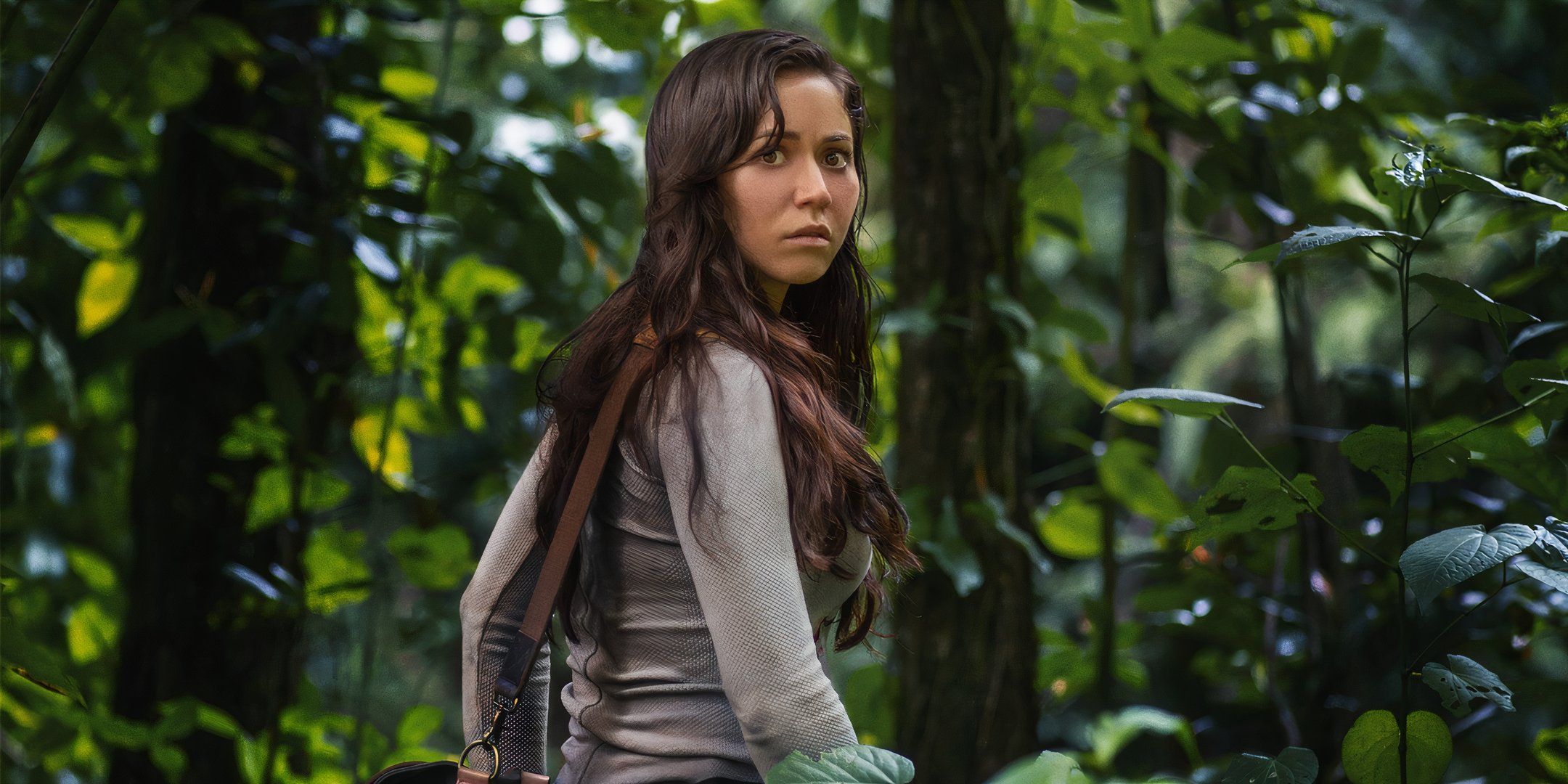
We navigate this world seeped in interrelated ancient cultures through Cristina, a journalist who has a heroin addiction, mental health issues, and a cultural identity crisis. She initially reacts to the kidnapping and potential possession like anyone would, but her complex engagement with her culture, where she is instinctively drawn to it but rationally recoils from it, lends to the commentary of its erasure. There is a surface-level exploration of this issue of newer generations “forgetting” their culture, especially since Cristina had migrated to America and had completely forgone communication with any of her hometown relatives. As such, her initial abduction combined with the film positioning us to perceive the events from her rational interpretation villainizes the old ways. This is accentuated when they are labeled as the “highest authorities” of the area, almost giving them a dictatorship-like feel. However, when we learn that they truly are exorcizing something evil and helping the community by containing it, we almost feel indebted to them, thus highlighting the significance of accepting cultures we may not understand.

That being said, the film exhibits both sides of the cultural erasure issue through Cristina’s cultural identity crisis. In the prologue, we are privy to one of Cristina’s core childhood memories of her mother writhing in pain and lashing out during an exorcism. Unable to comprehend this as a child, this cultural trauma that put her away in foster care, spurs Cristina away from her hometown. When she reminisces about this moment, she even blames the bruja for causing her mother’s death, claiming that she needed medication rather than spiritual healing. This disconnection leaves a hollow feeling of displacement wherever she goes, leading to her heroin addiction and poor mental health in the hope of numbing the feeling. As such, the film uses a two-pronged approach to investigating cultural erasure and trauma, demonstrating how the two interact in a cause-and-effect sort of way, but also exhibits a more hopeful and powerful ending that finds a compromise between the two.
Now, if you haven’t seen The Old Ways yet, go watch it now on Netflix and come back as there is a small spoiler ahead. As Cristina heals from her past and becomes more receptive to the parts of her culture she has been haunted by, we are rewarded with a resounding ending that deftly captures the point where ancestral traditions and modernity meet. Cristina’s character journey from explicitly running away from her roots to embracing them sees her stepping into the role of the village’s bruja. This is most strikingly symbolized in Cristina’s makeup, which has all the hallmarks of traditional bruja markings yet is given more modern angular placements, draping along the cheekbones and brushed down in painterly strokes. Even the way she interacts with her “patients” is more performative yet casual, creating a relatable but still uneasy atmosphere.
‘The Old Ways’ Uses Cultural Soundtracks and Folk Imagery
While the end of the film and Cristina’s arc are powerful, it is the cultural journey we undertake, adorned with echoing soundtracks and stunning visuals, that resonates with us the most. Shots in the film are filled to the brim with natural imagery, from the greenery and streams of the jungle to the vines, feathers, and hemp rope of the bruja’s residence. This warm folk imagery is starkly contrasted with the coldness of the metal and white lights of Cristina’s memories in her office, setting up a more ancestral atmosphere that feeds into the generational conflict between modernity and cultural heritage. This is also amplified by the choices of Veracruz jarocho music and traditional, recognizable folk ballads like “La Llorona” and “La Bamba,” all played dismally in reflection of Cristina’s lost heritage.
The Old Ways creates a highly conflicting atmosphere, simultaneously sinister yet comforting, and mournful yet celebratory. Being completely captivated by this world, just as Cristina is, we can fear the more visceral and confronting rituals where blood is drawn prolifically and guttural screams echo in the chambers, yet appreciate the humanity and nuances of the characters who engage in these seemingly sinister activities simply to protect everyone. As such, the film grieves and celebrates the old ways by creating a beautiful amalgamation of cultures and using a culturally lost protagonist to guide us through it.
The Old Ways is available to stream on Netflix in the U.S.
News
‘Prison Break’ Continues Streaming Dominance As ‘Fire Country’ Heats Up On Nielsen Charts
Prison Break; Fire Country Prison Break held a steady audience for the second consecutive week, raking in another 1.6B minutes viewed from August 12 to 18. That put it in first place on Nielsen‘s streaming charts, fueled by its return to Netflix in July. According to…
Kelly Clarkson Addresses Being Vulnerable After Heartbreak
Kelly Clarkson is giving a peek behind those hazel eyes. The American Idol alum recently opened up about why she’s able to connect with her guests and audiences as the host of her Emmy-winning talk show The Kelly Clarkson Show, which premieres its sixth…
Kelly Clarkson reacts to Carrie Underwood becoming ‘American Idol’ judge
Kelly Clarkson knows Carrie Underwood has been waiting for a moment like this. “The Kelly Clarkson Show” host — whose sixth season kicks off on NBC Sept. 23 — shared that she’s so excited for her fellow “American Idol” alum to join the competition…
‘American Idol’ Tries To Sign Up ‘Hawk Tuah Girl’ As She Brands Move ‘Dirty’
aliey Welch, otherwise known as ‘Hawk Tuah Girl’, has said that American Idol producers approached her to join the show, calling the move “dirty.” Welch became an online hit after she was asked a question in the street about her sex life…
Hailey Bieber pictured out for first time since giving birth as she has dinner date with pal Kylie Jenner while husband Justin stays home
New mom Hailey Bieber was seen out in Los Angeles this week for the first time since she gave birth to son Jack Blues Bieber two weeks ago. The 27-year-old model bared her long legs in a dark pair of shorts or a skirt, which was…
Amanda Rollins’ Law & Order: SVU Season 26 Role Is A Big Insult To Kelli Giddish
Amanda Rollins’ new role in Law & Order: SVU is an insult to the actress Kelli Giddish after the way she was written out. Rollins is one of the most popular characters in the long-running police procedural. After Giddish’s season 24 exit from Law…
End of content
No more pages to load







